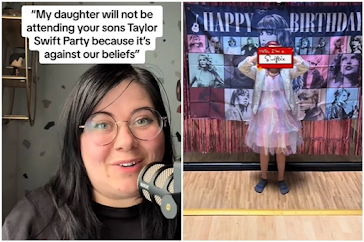What do you see in the photo? What’s happening? What do you
think this story is about?
The photo shows make-up artist Clelia Rodrigues. Clelia was
born with arthrogryposis, a condition that causes severe stiffness in the
joints. She uses her mouth to hold her make up brushes and has amassed hundreds
of thousands of followers on social media.
An article written by Niamh Ni Hoireabhaird calls for
equality in the beauty industry.
-
How is the beauty industry unequal?
Niamh says, “As a disabled teenager I yearned for my
identity to be represented in the mainstream beauty industry world. Now, as a
grown disabled women, I am still wishing for the same thing.”
What is representation?
What is mainstream?
Is representation important? Why does Clelia want to be
seen?
Clelia says, “There are so many ableist norms and
assumptions about what audiences want and need”
-
What is ableism? Can you think of an example?
-
What are ableist norms?
-
What is an assumption?
Clelia says disabled people are excluded from images and
conversations around beauty and “that prohibits us from imagining ourselves as
beautiful and loved”
-
What is your response? Why do you think disability is excluded from images around
beauty?
Clelia argues we need to be talking about having a
disability and looking different.
-
Why do you think Clelia says this?
-
How can taking about difference help?
Clelia says another answer is, “Creating and marketing
make-up products that are easier for disabled people to use and by amplifying
the voices of disabled people in the field.”
-
How can make up products be made easier for
disabled people to use? What do you think are the current barriers?
Khol Kreatives have released easy grip brushes and Lancome
have recently released motorised lipstick applicator to make make-up more
accessible.
-
What does accessible mean?
-
How do you think these products make-up more
accessible?
There are more influencers listed in the link above.
-
Do you think the beauty industry will change?
-
How does stigma ever change? Are there examples
in history of stigma’s shifting?
-
What can we learn form people like Clelia?
-
What can we do today at our school to shift
attitudes in society?
-
How is this linked to no outsiders?
No Outsiders: we belong here by Andrew Moffat



